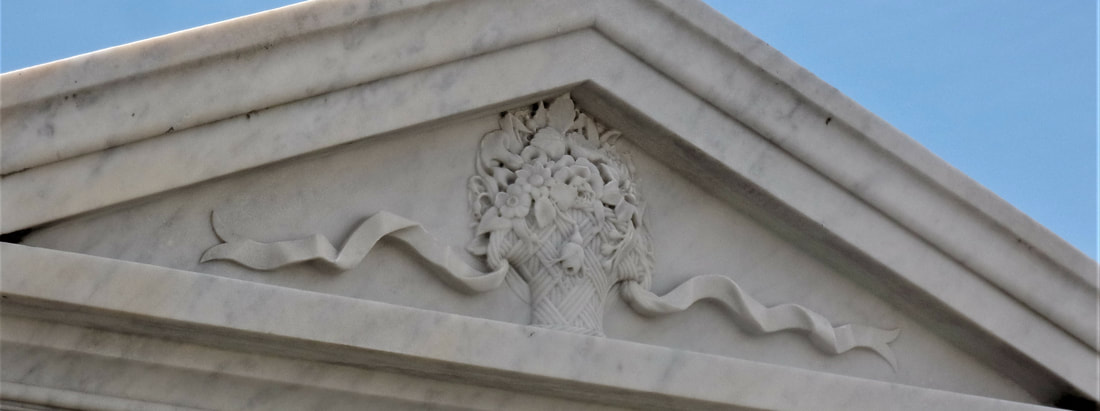|
How one of New Orleans best-known cemetery stonecutters chose his flower symbols. Iconography is a favorite interest of cemetery researchers and visitors alike. Its symbolic images can be religious (Cohenim hands and water pitchers in Jewish iconography, for example), fraternal (inverted pentagrams and all-seeing eyes, anyone?), occupational, or, in modern times, even outrightly representative of the interests of the deceased.
The symbolism of flowers and plants has a special place in the cemetery landscape. The appearance of a flower offers its own particular aesthetic, while suggesting a larger theme: loyalty, faith, or a life cut short, for example. The origin and popularity of floral symbolism has roots in ancient Greece and flourished in the nineteenth century. New Orleans stonecutters utilized flowers prolifically during this period. Craftsmen from Paul Hyppolyte Monsseaux to Joseph Callico to Albert Weiblen included them in their tablets. But one stonecutter’s use of floral iconography stands out even among his contemporaries. The work of Florville Foy, whose work spanned from the 1840s to the turn of the twentieth century, can be distinguished for its floral work. For this researcher, the appearance of a pansy on a tablet almost guarantees a Florville Foy signature. In this post, we examine Florville’s flowers.
1 Comment
|
About the Author:Emily Ford owns and operates Oak and Laurel Cemetery Preservation, LLC. Archives
November 2019
Categories
All
|
- About
-
Restoration
- Services
-
Portfolio
>
- Turning Angel Statue, Natchez, MS
- Ledger Monument, Baton Rouge, LA
- Pyramid Statuary, New Orleans, LA
- Bronze and Granite Monument, Carville, LA
- Box Tomb, New Orleans, LA
- Vernacular Concrete Monument, Pensacola, FL
- 1830s Family Tomb, Covington, LA
- 1850s Family Tomb, New Orleans, LA
- 1880s Family Tomb, New Orleans, LA
- Headstone and Monument Restorations, Pensacola, FL
- Society Tomb, New Orleans, LA
- Education
- Blog
- Contact
|
Oak and Laurel Cemetery Preservation, LLC is a preservation contractor in New Orleans, Louisiana, specializing in historic cemeteries, stone conservation, educational workshops and lectures. Oak and Laurel serves the region of the Southeastern US.
|
QUICK LINKS |
CONNECT |
Proudly powered by Weebly



